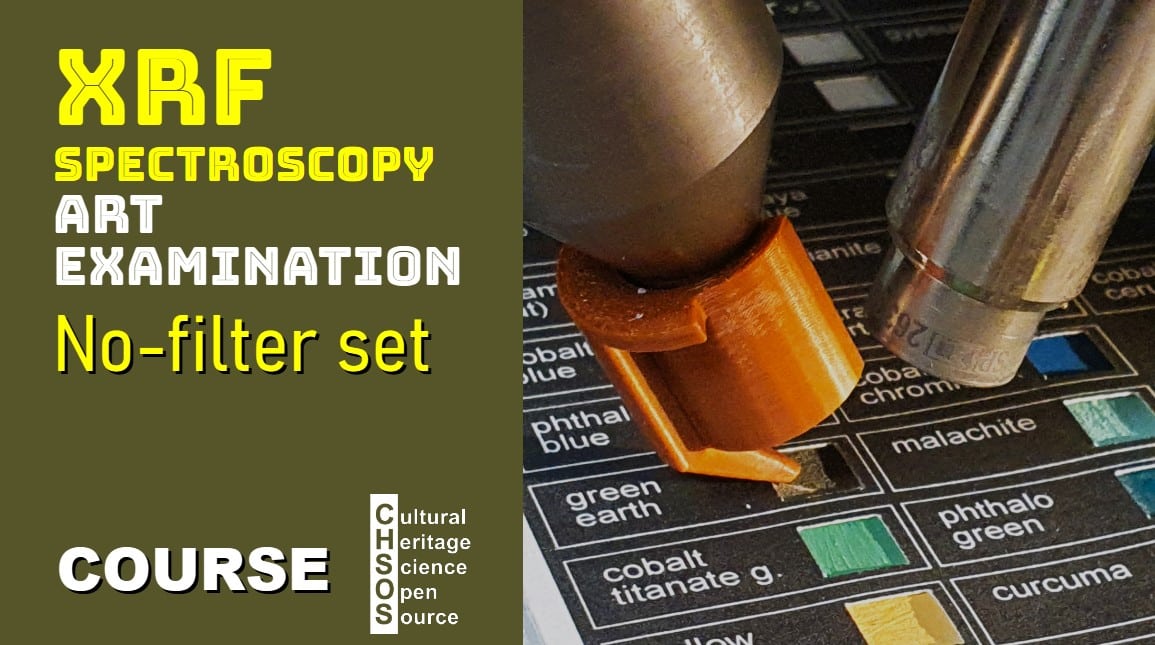
This lesson focuses on the no-filter configuration in XRF spectroscopy, which allows enhanced detection of elements with very low energy XRF lines, particularly those starting from silicon down to magnesium. This no-filter setup is designed to capture readings in the low-energy range, specifically between 2,5 keV and zero, and is an alternative approach to using the routine and LOW-KEV filter sets, which have distinct applications in analyzing different energy levels of elements.
Objectives:
- Understand the function and benefits of the no-filter setup in XRF spectroscopy.
- Identify the types of elements best analyzed using the no-filter setup, specifically those with low-energy XRF lines.
- Differentiate between the routine, LOW-KEV, and no-filter setups for XRF analysis.
- Practice applying the no-filter setup to identify low-energy elements in a sample.
Materials:
- High-density polyethylene (HDPE) plate
- Samples for analysis, specifically containing elements such as silicon and magnesium
- Pigments Checker, specifically green earth, containing minerals such as celadonite and glauconite, silicate minerals
Lesson Plan:
1. Introduction to Filter Sets
- Review the purpose of filter sets in XRF spectroscopy and their specific roles.
- Summarize the ROUTINE filter set for general analysis and the LOW-KEV filter set for focusing on XRF lines below 10 keV.
- Introduce the no-filter setup as a specialized approach for very low-energy XRF lines, highlighting its strengths and limitations.
2. Overview of No-Filter Configuration
- Describe the no-filter setup: settings are 10 kV and 10 µA, with no filter added.
- Explain how the no-filter setup enables the capture of low-energy lines below 2.5 keV, making it suitable for detecting elements from magnesium up to sulfur.
- Emphasize that this setup is optimized for elements with lower atomic numbers.
3. Testing and Observing the XRF Spectrum Using HDPE as a Target
- Set up the HDPE plate as a target to reflect the X-rays from the tube, allowing the detector to capture the tube’s output at both high and low settings (50 kV/50 µA and 10 kV/10 µA).
- Compare spectra produced by the no-filter configuration at different settings and note the absence of high-energy X-rays at 10 kV.
- Discuss the flat, undisturbed spectrum observed below 2.5 keV and its advantages for low-energy XRF line analysis.
4. Practical Application: Analyzing the Green Earth Pigment
- Explain that green earth, a pigment containing celadonite and glauconite (iron-rich silicate minerals), is an ideal test sample for low-energy analysis.
- Conduct a comparison of the green earth pigment using both the LOW-KEV and no-filter setups, observing the resulting spectra.
- Note the silicon peak at 1.7 keV that appears only in the no-filter setup, verifying the presence of silica and confirming the silicate composition of the pigment.












